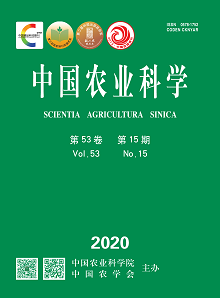【Objective】In order to provide a theoretical basis for the further improvement of the yield and nutrient efficiency of different maize production levels, the effects of the increasing and decreasing measures on the yield and nutrient efficiency of maize under different technical modes were explored, and the technical priorities were clarified. 【Method】 By investigating the yield level and technical mode of farmers, high-yield and high-efficiency, as well as super high yield, it was clear that planting density, cultivation measures, nitrogen management and varieties were the main measures to limit the yield and efficiency improvement of maize at different production levels. On the basis, three technical models of super high yield (SH), high-yield and high-efficiency (HH) and farmer household (FP) were set up. According to the measure factors under different technical modes, the split area experiment was carried out, in which the tillage method was the main plot, the variety was sub-plot, the nitrogen fertilizer management was sub-sub-plot, and the density was sub-sub-sub-plot.【Result】Under the FP model, the priority order of technical measures to yield contribution was nitrogen management, planting density, soil tillage, and variety, while the contribution rate to yield was 9.9%, 6.0%, 4.4% and 2.5%, respectively. Under the HH model, the priority order of cultivation measures to yield contribution was planting density, nitrogen management, soil tillage, and variety, with the contribution rate of 7.7%, 5.2%, 4.5% and 3.5%, respectively. Under SH mode, the priority order of cultivation measures to yield contribution was planting density, soil tillage, nitrogen management, and variety, with the contribution rate of 8.9%, 7.3%, 6.5% and 4.3%, respectively. Among the three models, the contribution rate of cultivation technical factors to nitrogen efficiency from high to low was nitrogen management, planting density, soil cultivation and variety. Among them, the contribution rate of nitrogen management, planting density, soil tillage and variety to nitrogen efficiency was 30.5%, 6.0%, 4.4% and 2.5% in FP mode, 19.7%, 7.7%, 4.7% and 4.5% in HH mode, 25.4%, 8.3%, 6.5% and 4.5% in SH mode, respectively.【Conclusion】There was no fixed priority order for the contribution of technical factors to the yield. The formation of yield gap under different management levels was affected by multiple factors, and the technical factors had synergistic effect. Under the management of farmer's level, the contribution rate of nitrogen management to the yield ranked first, while the contribution of planting density and soil tillage to the yield was greater under the higher management level. However, the nutrient efficiency gap was mainly caused by nitrogen management, and the contribution rate of nitrogen management to nutrient efficiency ranked the first at different yield levels.









